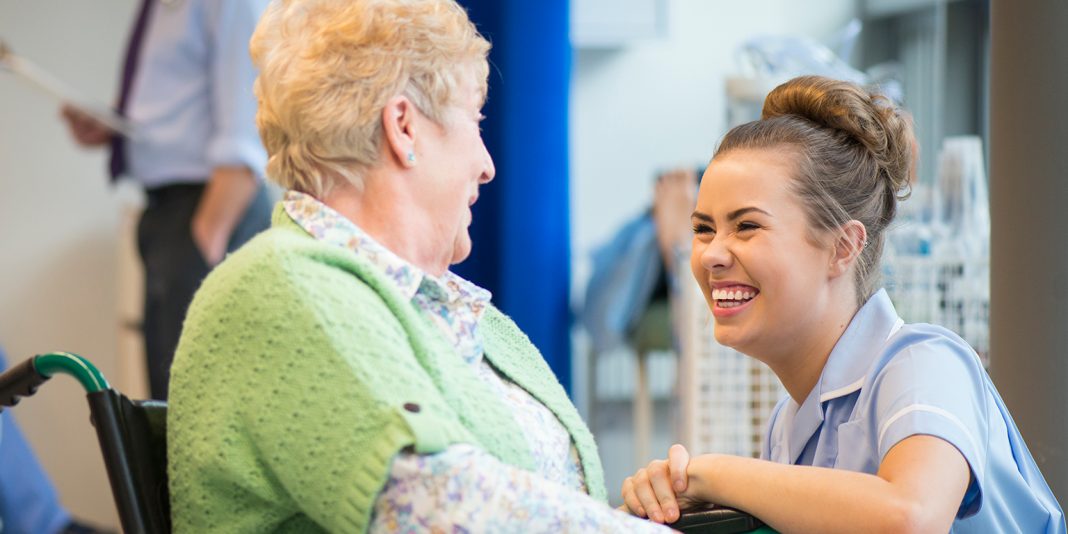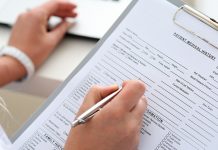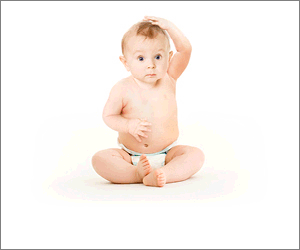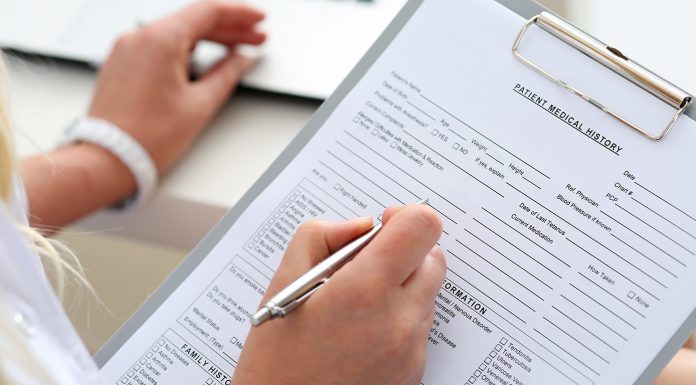LEARNING OBJECTIVES
- At the conclusion of this article you will be able to:
- Outline the interRAI definition of a fall.
- Describe the rationale and evidence for multifactorial assessment and interventions.
- Discuss ways of talking about falls with older people and their families/ whānau and how to manage falls risks.
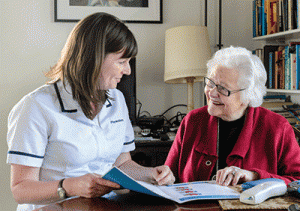 Falls are the most common and costly injury for older people1 and falls (with or without injury) are an independent predictor of admission to age-related residential care2.
Falls are the most common and costly injury for older people1 and falls (with or without injury) are an independent predictor of admission to age-related residential care2.
A national programme, Reducing Harm from Falls, is aimed at preventing falls and reducing fall-related harm in older people. The three-year programme is led by the Health Quality & Safety Commission in partnership with the Accident Compensation Corporation (ACC) and other stakeholders. In the programme’s expert advisory group are clinicians, care providers, researchers, and consumers who understand the impact and personal costs of a fall for an older person and their family/whānau.
Practices that make the care environment safer for all older people (irrespective of their risk of falling) are essential elements in falls prevention3, but the purpose of this article is to outline the national programme’s Ask, assess, act process as an individualised approach to preventing falls.
Ask, assess, act principles apply in all settings, and the process can complement existing screening, assessment, and planning tools. The process is particularly useful in hospital settings (inpatients, outpatients, and emergency departments), primary health care, and home-based care.
Older people and falls
Older people are defined as those aged 65 and over, a group increasing in number due to trends in improved health and more effective health care. This group ranges from those who are generally healthy and active to the significant proportion (25-50 per cent) of those over 85 estimated to be frail4.
Falls occur at all ages, but for older people, a high incidence of falls combines with:
- high susceptibility to injury because of age-related physiological changes (such as slower protective reactions) and
- high prevalence of clinical conditions implicated in increasing risk of falling (such as postural hypotension) or risk of injury (such as osteoporosis)1.
The most serious injuries resulting from falls are head injuries and fractures, with hip fracture the most common fracture after the age of 751. Even without physical injury, a fall can create anxiety and a loss of confidence in the person and their family/whānau or caregivers5.
Overall, around 30 per cent of generally healthy community-dwelling older people will fall at least once each year – mostly without serious injury, but about 5 per cent will have a fracture or require hospitalisation related to a fall. Fall and injury rates rise with age, and these figures double for community-dwelling people aged 75 years and over.
Definition of a fall
For consistency in risk assessment and reporting falls, the expert advisory group recommends the operational definition from interRAI assessment protocols: ‘Any unintentional change in position where the person ends up on the floor, ground, or other lower level; includes falls that occur while being assisted by others’6. Importantly, a fall is an unintended event, and contact with the floor is not necessary to count as a fall.
The Ask, assess, act process
The Ask, assess, act process conforms closely to recommendations in current clinical guidelines7 because it is based on the same strong evidence from systematic reviews: falls in older people in hospital and community settings can be prevented by implementing interventions and supports which address their individual risk factors8,9.
This ‘multifactorial’ approach recognises that older people may have a number of risk factors, which may be inter-related (at the same time, just one factor can put an older person at risk). Because every older person is different, they have different risk factors, and need different interventions and supports.
The process helps target who will benefit from multifactorial assessment and intervention. The first step is to screen older people to identify those at risk of falling. For those at risk, the second step involves undertaking a systematic assessment of falls-related risks factors that could be treated, modified or better managed10. The third, and most important step, is actioning a plan of interventions and supports (including referral for specialist input as needed) to address the risks identified for this person10.
The Commission has developed a set of downloadable resources for the Ask, assess, act which include:
- Informational poster
- Helpsheet
- Patient letter for those at risk
- Learning activities.
Find them at
www.hqsc.govt.nz/our-programmes/reducing-harm-from-falls/projects/ask-assess-act
The pocket card (above) and promotional posters can also be requested in hard copy.
Start by asking about falls
Make it routine to ask whether an older person has fallen in the past year, and enquire about the frequency, context and characteristics of any falls11,12. Explanation of a fall as ‘an accident’ due to an identified hazard in the environment should be probed further. Falls are often the result of an interaction between the hazard and the person’s accumulated age-related changes in functioning and disease processes, rather than being caused by the hazard alone1.
Falls – and their causes – may go without clinical attention simply because health professionals don’t ask and older people might not mention that they have fallen13, particularly if there was no injury or they are anxious about the possibility of going into residential care.
ASK: Have you slipped, tripped, or fallen in the last year?
- Having fallen previously is predictive of falling again14, and in the hospital setting, it’s an especially worthwhile question, as about 50 per cent of inpatients who fall have fallen before15.
- When talking with older people about their fall experiences, asking about ‘slipping, tripping, stumbling, or losing balance’ is recommended, as these are the words older people themselves might use, and they capture near falls16.
ASK: Can you get out of a chair without using your hands?
- Asking about whether an older person uses their hands to push up out of a chair is an abbreviated form of the ‘sit to stand’ test17.
- A demonstration that this is the case, or a positive answer indicates further investigation of balance problems and lower limb weakness will be needed.
ASK: Are there some activities you’ve stopped doing because you are afraid you might lose your balance? Do you worry about falling?
- Restricting physical and social activities to reduce the risk of falling reduces quality of life and ‘fear of falling’ can create a downward spiral in which loss of condition increases risk5.
- In one study, 19 per cent of a sample of community-dwellers (both with and without a fall in the last year) aged 75 and over acknowledged activity avoidance18.
Assess by risk factors using a consistent approach
Checklists covering common falls risk factors are recommended to ensure no factors are missed in assessment19,20. The Ask, assess, act resources developed for the programme group risk factors in relation to physical activity, medical risks associated with underlying conditions, and home safety21.
Standardised documentation also facilitates consistency, whether in separate documents or specific falls sections in general assessment tools10, such as the care-planning component developed for the TrendCare workload management system22.
Assessment by risk factors is an ongoing process necessarily integrated with care planning. It is not a once-only task, as new risk factors may present as an older person’s functioning and conditions change.
What about risk prediction scores?
Falls risk prediction tools are those that aim to calculate a person’s risk of falling in a numerical score, either in terms of ‘at risk/not at risk’, or ‘low/medium/high risk’.
However, there are questions about the validity and reliability of risk prediction tools, and concerns that arriving at a score may lead staff to feel that ‘something has been done’ without any substantive action being taken15.
Another problem arises where the score is used to match an older person’s ‘amount’ of risk to a predetermined set of interventions – some interventions may be irrelevant and some may be missing15,21.
For these reasons, the use of predictive risk scoring tools is a ‘Do not’ recommendation in the National Institute for Health and Care Excellence 2013 clinical guideline12.
Act to implement individualised interventions and supports
Assessment by risk factors results in an individualised plan of care in which interventions and supports address identified risk factors. Managing falls risks is not an ‘extra’ – for example, problems with urinary continence or urgency warrant the interdisciplinary team’s attention in any case, and medicine use review is an ongoing process. Referrals for specialist input may be needed.
What you bring as a nurse to the Ask, assess, act process
The commission’s Quality and Safety Markers (QSMs) for falls pose the question: ‘Are we doing the right things?23. The two markers measure the extent to which risk assessment and care planning are carried out for older inpatients at risk of falling. Apart from evidence already noted for the effectiveness of multifactorial interventions in this group8, risk assessment is a component commonly found in effective falls prevention programmes24.
While measuring that the right things are being done is important, the qualitative aspects of ‘how’ they are done is even more important.
Critical thinking and clinical judgement
The way an older person moves tells you about problems and confidence in mobilising – add to that knowledge of their health history, and it’s no surprise that clinical observation and judgement matches or outperforms falls risk prediction tools25. A study of inpatient preferences found that clinical attention – a multifactorial approach including a review by a health professional – was valued highest26. What makes risk assessment and care planning valuable is not simply ‘ticking boxes’ – but a focus on the person.
A positive conversation
Attunement to whether this older person fears falling or believes it is something that happens to other people27 guides the way you ‘have the conversation’ about falls. It’s possible that the person who has had a fall is more open to the information that, while the risk of falling does increase with age, falls are likely but not inevitable – and “… you can do something about it”28. The goal is to help older people identify their risks and management options, choose the actions they can realistically take themselves, and make decisions about the options offered in an interdisciplinary approach.
Eliciting the older person’s insights and preferences
For the older person at risk of falling, a partnership approach involves them, their families/whānau, and others involved in their care. It means:
- asking what they believe were the causes of a fall, and how they think they can avoid further falls
- understanding what they see as major health problems and their main falls risk factors
- prioritising and limiting the number of fall prevention recommendations if they already feel overwhelmed by their situation
- checking for preferences and what is manageable (e.g. choosing between referral to a home-based or group exercise programme), and what ‘trade-offs’ are acceptable (e.g. reducing or stopping medicines associated with higher risk of falling)
- identifying their personal strengths and supporting their resilience29.
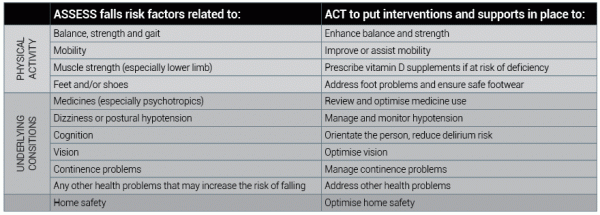
Download the learning activity here>>
About the author:
Shelley Jones RN BA MPhil is currently programme adviser with the Health Quality & Safety Commission’s national programme, Reducing Harm from Falls. This article draws on material prepared for 10 topics in reducing harm from falls. Shelley is self-employed in professional and organisational/resource development.
REFERENCES
1. RUBENSTEIN LZ. 2006. Falls in older people: epidemiology, risk factors and strategies for prevention. Age and Ageing 35-S2:ii37-ii41.
2. TINETTI ME, WILLIAMS CS. 1997. Falls, injuries due to falls, and the risk of admission to a nursing home. New England Journal of Medicine 337(18): 1279–84.
3. HEALTH QUALITY & SAFETY COMMISSION. 2013. Topic 4 Safe environment and safe care: essential in preventing falls. www.hqsc.govt.nz/our-programmes/reducing-harm-from-falls/10-topics/topic-4/ (accessed 11 April 2014).
4. CLEGG A, YOUNG J, ILIFFE S et al. 2013. Frailty in elderly people. The Lancet, 381(9868):752–62.
5. DELBAERE K, CLOSE JC, BRODATY H et al. 2010. Determinants of disparities between perceived and physiological risk of falling among elderly people: cohort study. BMJ 341: c4165.
6. MORRIS JN, BERG K, BJORKGREN M et al. 2010. interRAI Clinical Assessment Protocols (CAPs) for Use with Community and Long-Term Care Assessment Instruments. Version 9.1. interRAI: Washington DC.
7. HEALTH QUALITY & SAFETY COMMISSION. 2013. Falls risk multifactorial assessment and interventions: a comparison of current guidelines. URL:www.hqsc.govt.nz/our-programmes/reducing-harm-from-falls/publications-and-resources/publication/1081/ (accessed 11 April 2014).
8. CAMERON ID, GILLESPIE LD, ROBERTSON MC et al. 2012. Interventions for preventing falls in older people in care facilities and hospitals. Cochrane Database of Systematic Reviews (12): CD005465.
9. GILLESPIE LD, ROBERTSON MC, GILLESPIE WJ et al. 2012. Interventions for preventing falls in older people living in the community. Cochrane Database of Systematic Reviews (9): CD007146.
10. HEALEY F, DAROWSKI A. 2012. Older patients and falls in hospital. Clinical Risk 18(5): 170–6.
11. PANEL ON PREVENTION OF FALLS IN OLDER PERSONS, AMERICAN GERIATRICS SOCIETY AND BRITISH GERIATRICS SOCIETY. 2011. Summary of the updated AGS/BGS clinical practice guideline for prevention of falls in older persons.Journal of the American Geriatrics Society 59: 148–57.
12. NATIONAL INSTITUTE FOR HEALTH AND CARE EXCELLENCE. 2013. NICE Clinical guideline 161 Falls: assessment and prevention of falls in older people.
URL: http://publications.nice.org.uk/falls-assessment-and-prevention-of-falls-in-older-people-cg161 (accessed 10 July 2013).
13. DOLLARD J, BRAUNACK-MAYER A, HORTON K et al. 2014. Why older women do or do not seek help from the GP after a fall: a qualitative study. Family Practice. 31(2):222.
14. AMERICAN GERIATRICS SOCIETY, BRITISH GERIATRICS SOCIETY, AND AMERICAN ACADEMY OF ORTHOPAEDIC SURGEONS PANEL ON FALLS PREVENTION. 2001.Guideline for the prevention of falls in older persons. Journal of the American Geriatrics Society 49(5): 664–72.
15. OLIVER D, PAPAIOANNOU A, GIANGREGORIO L et al. 2008. A systematic review and meta-analysis of studies using the STRATIFY tool for prediction of falls in hospital patients: how well does it work? Age and Ageing 37(6):621–7.
16. HAUER K, LAMB SE, JORSTAD EC et al. 2006. Systematic review of definitions and methods of measuring falls in randomised controlled fall prevention trials. Age and Ageing 35(1): 5–10.
17. BOHANNON RW. 1995. Sit-to-stand test for measuring performance of lower extremity muscles. Perceptual and Motor Skills 80(1): 163–166.
18. TINETTI M E, DE LEON CFM, DOUCETTE J T et al 1994. Fear of falling and fall-related efficacy in relationship to functioning among community-living elders. Journal of Gerontology 49(3), M140-M147.
19. OLIVER D, HEALEY F. 2009. Falls risk prediction tools for hospital inpatients: do they work? Nursing Times 105(7):18–21.
20. GANZ D A, HUANG C, SALIBA D et al. 2013. Preventing Falls in Hospitals: A Toolkit for Improving Quality of Care. Rockville, MD: Agency for Healthcare Research and Quality.
21. GANZ DA, ALKEMA GE, WU S. 2008. It takes a village to prevent falls: reconceptualizing fall prevention and management for older adults. Injury prevention 14(4):266-271.
22. BLAKE S. 2013. Falls Risk Assessment in TrendCare. Wellington: Health Quality & Safety Commission.
23. HEALTH QUALITY & SAFETY COMMISSION. 2014. Falls quality and safety marker URL: www.hqsc.govt.nz/our-programmes/health-quality-evaluation/projects/quality-and-safety-markers/falls/ (accessed 11 April 2014).
24. MIAKE-LYE IM, HEMPEL S, GANZ DA ET Al. 2013. Inpatient fall prevention programs as a patient safety strategy. Annals of Internal Medicine 158(5–P2):390–397.
25. DA COSTA BR, RUTJES AWS, MENDY A et al. 2012. Can falls risk prediction tools correctly identify fall-prone elderly rehabilitation inpatients? A systematic review and meta-analysis. PloS ONE 7(7): e41061.
26. HAINES TP, MCPHAIL S. 2011. Patient preference for falls prevention in hospitals revealed through willingness-to-pay, contingent valuation survey. Journal of Evaluation in Clinical Practice 17(2):304–310.
27. DOLLARD J, BARTON C, NEWBURY J et al. 2012. Older community-dwelling people’s comparative optimism about falling: A population-based telephone survey. Australasian Journal on Ageing 32(1):34-40.
28. ACCIDENT COMPENSATION Corporation. 2012. Standing up to falls. Wellington: ACC. (at www.acc.co.nz/older-people, along with the checklist, How safe is your home.)
29. MCINNES E, ASKIE L. 2004. Evidence review on older people’s views and experiences of falls prevention strategies. Worldviews on Evidence-Based Nursing 1(1): 20–37.
THE HOUR OF POWER: Falls in older people
Reading the article and undertaking this learning activity is equivalent to 60 minutes of professional development.
-
- undertaking evidence-informed assessment and care planning,
- It contributes to maintaining competence by helping you reflect on your responsibilities in
- promoting the safety and independence of those in your care, and
- your involvement in quality activities that address safety issues and improve care for patients and their families/whanau.
